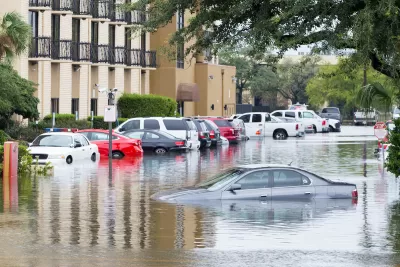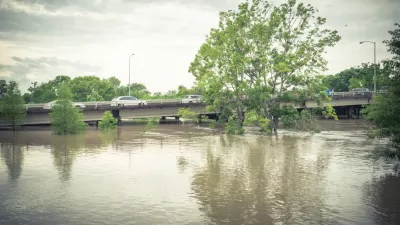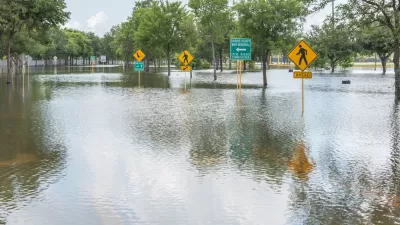Federally identified ‘disaster resilience zones’ could receive more funding and resources to urgently address climate resilience and prepare their neighborhoods for future extreme weather.

A federal measure of flood risk places more ‘disaster resilience zones’ in the Greater Houston area than any other county in the United States, writes Muizz Akhtar in Urban Edge. Census tracts are designated as disaster resilience zones for at least five years if identified as disadvantaged using the federal Climate and Economic Justice Screening Tool and if they rank in the top 50 nationally or top 1 percent of vulnerable communities in their state.
According to a FEMA press release, “these designations will help ensure that the most at-risk communities are able to build resilience against natural hazards and extreme weather events, which are becoming increasingly intense and frequent due to climate change.”
In Houston, “The 14 tracts are home to slightly less than 60,000 people, or just over 1% of the county's population, but they are also home to people who tend to have less resources to help them deal with extreme weather:” the population is overwhelmingly poorer than the rest of the county, while the housing stock is significantly older.
“According to a recent survey by the Kinder Institute, significant shares of Houstonians do not feel ready for the next disaster, with 44% saying not enough has been done to prepare (in terms of mitigation and resilience projects), 40% saying their community is not ready to recover from extreme weather and 42% saying their home is not safe from it.”

Study: Maui’s Plan to Convert Vacation Rentals to Long-Term Housing Could Cause Nearly $1 Billion Economic Loss
The plan would reduce visitor accommodation by 25,% resulting in 1,900 jobs lost.

North Texas Transit Leaders Tout Benefits of TOD for Growing Region
At a summit focused on transit-oriented development, policymakers discussed how North Texas’ expanded light rail system can serve as a tool for economic growth.

Using Old Oil and Gas Wells for Green Energy Storage
Penn State researchers have found that repurposing abandoned oil and gas wells for geothermal-assisted compressed-air energy storage can boost efficiency, reduce environmental risks, and support clean energy and job transitions.

Private Donations Propel Early Restoration of Palisades Playground
Los Angeles has secured over $1.3 million in private funding to restore the Pacific Palisades playground months ahead of schedule, creating a modern, accessible space that supports community healing after recent wildfires.

From Blight to Benefit: Early Results From California’s Equitable Cleanup Program
The Equitable Community Revitalization Grant (ECRG) program is reshaping brownfield redevelopment by prioritizing projects in low-income and environmental justice communities, emphasizing equity, transparency, and community benefits.

Planting Relief: Tackling Las Vegas Heat One Tree at a Time
Nevada Plants, a Las Vegas-based nonprofit, is combating the city’s extreme urban heat by giving away trees to residents in underserved neighborhoods, promoting shade, sustainability, and community health.
Urban Design for Planners 1: Software Tools
This six-course series explores essential urban design concepts using open source software and equips planners with the tools they need to participate fully in the urban design process.
Planning for Universal Design
Learn the tools for implementing Universal Design in planning regulations.
Ascent Environmental
Borough of Carlisle
Institute for Housing and Urban Development Studies (IHS)
City of Grandview
Harvard GSD Executive Education
Toledo-Lucas County Plan Commissions
Salt Lake City
NYU Wagner Graduate School of Public Service





























